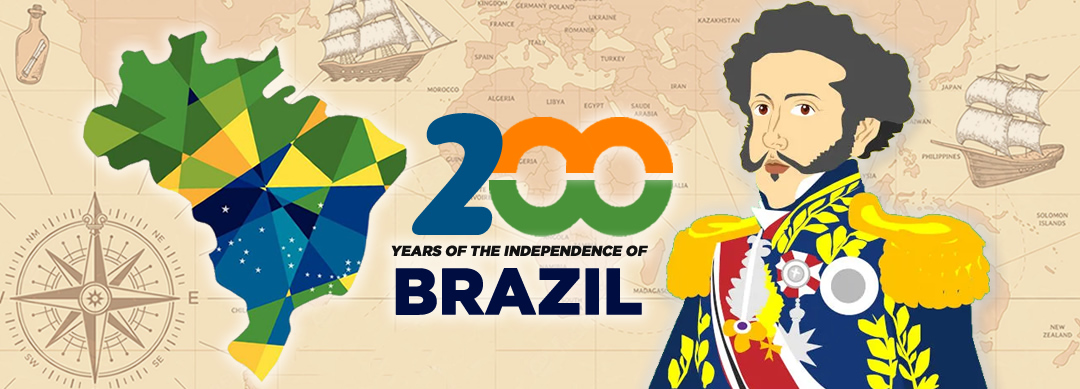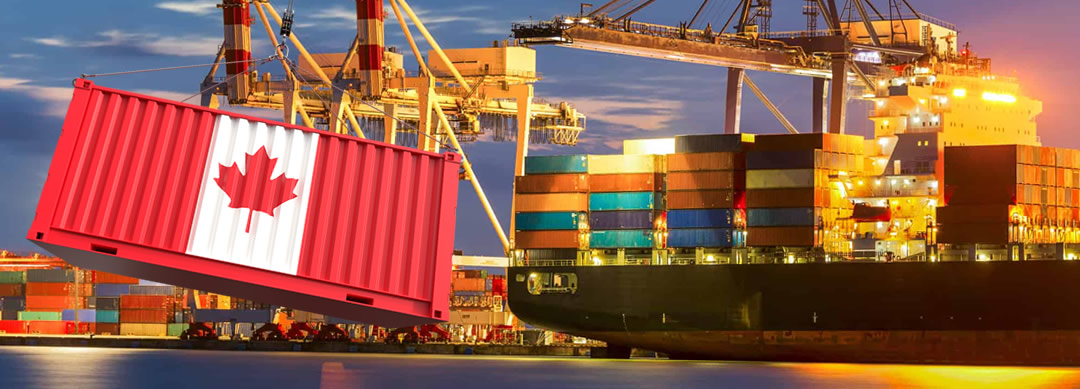For most of the 200 years of its existence as an independent country, Brazil has always maintained close relations with Canada – diplomatic, immigration and business
By Sérgio Siscaro
Next month Brazil celebrates the bicentennial of its political independence. On September 7, 1822, the break with metropolis Portugal was announced, leading the country to be governed autonomously and seek international recognition. In the following decades it would intensify its relations with the rest of the world – including the territory that would become Canada.
Back then, the North American country had not yet become autonomous from the United Kingdom; this was only to happen in 1867, when three separate colonies decided to unite – the provinces of Canada, Nova Scotia, and New Brunswick. They went on to form a unified confederation, which would become the Dominion of Canada: a virtually independent country, although its foreign policy was still determined by the British crown. In the following decades, new territories would join the confederation, until the incorporation of Alberta and Saskatchewan in 1905. Canadian independence was strengthened by the Statute of Westminster in 1931, and consolidated with the Constitution Act of 1982, which severed any legal ties that still bound the country to the United Kingdom.
It is interesting to note that a year before Canada was formed, in 1866, its provinces had already established a trade mission in Brazil. The ties between the two countries strengthened again during the Second Brazilian Reign, when Emperor Dom Pedro II visited the province of Ontario in 1876. This rapprochement between Brazil and Canada made sense within the idea of strengthening Pan-Americanism, a position that tried to circumvent Brazil’s strong dependence on the European powers of the time. The Brazilian delegation visited Manitou Island, near Lake Huron, the site of the Anashinabe civilization. It also visited Niagara Falls and Brockville.
Immigrant movement
Today Canada is a country that, due to its economic conditions, attracts immigrants from all over the world, including Brazilians – many of whom also study in Canadian higher education institutions. According to data from the Canadian government, in 2016 a total of 1,730 Brazilians were granted permanent residency in the country; by 2021, this number had jumped to 11,420.
It should be noted that these immigrant flows began already in the 19th century. In 1867 there were already five Canadians living in Colônia Príncipe Dom Pedro (SC); in 1873, a doctor from Quebec immigrated to Serro Azul (PR) with his family. In 1876, a large contingent of about 300 immigrants from Canada headed to Pará, taking advantage of a scheme to attract immigrants from North America established by the imperial government after the U.S. Civil War. The immigrants were allocated to the colony of Benevides.
Twenty years later, the efforts of the state of São Paulo to attract immigrant labor to the coffee plantations led to the arrival of 500 Canadians at the port of Santos in 1896, all from Montreal. However, a series of irregularities in the recruitment process eventually led to the repatriation of several of these immigrants.
In 1902, it was the turn of Brazilians to head to Canada. In that year, a group of 48 people, who originally immigrated to Oklahoma (USA), settled in Ontario. At the same time, there were also European immigrants who, after living for a few years in Brazil, tried their luck in Canada.
Bilateral contacts
The 20th century saw the gradual rapprochement of the two countries. Formal relations were established in 1941, in the midst of the Second World War. At the time, Brazil still oscillated between supporting the Allies, while Canada was already engaged in combat as a member of the British Commonwealth. That year, the first diplomatic mission was opened in Ottawa, under the command of João Alberto Lins de Barros, former Federal Inspector of the state of São Paulo. At the time, a Trade Treaty was signed, which came into force in 1943. Three years later, in 1944, the Canadian government inaugurated an embassy in the then capital Rio de Janeiro, led by ambassador Jean Désy.
As a result of this diplomatic exchange, the visits between the leaders of the two countries would intensify in the last decades. In 1971, during the Brazilian military dictatorship, Prime Minister Pierre Trudeau came to Brazil. After the re-democratization it was the turn of Canadian Prime Minister Jean Chrétien, who visited the country in January 1995. On the occasion, he emphasized the cooperation between Brazil and Canada in various international forums, dealing with issues as diverse as disarmament, human rights and the reform of the United Nations (UN). “Brazil and Canada are almost at opposite ends of the world. For friends, that is a long distance; so we may have to work a little harder, but the rewards will be worth it,” Chrétien said at the time, ushering in an era of intensified bilateral contacts – such as President Fernando Henrique Cardoso’s visit to Canada in 2001.
Today, the two countries are partners within the G-20 – a group of countries created in 1999 in the context of the financial crises of that period, and which aims to coordinate policies among members to promote sustainable growth and economic stability, among other topics. In addition, two other initiatives have brought Brazil and Canada closer together at the institutional and economic levels. One is the Strategic Partnership Dialogue, launched by President Dilma Rousseff and Prime Minister Stephen Harper in 2011, with the purpose of establishing a forum to discuss the bilateral cooperation agenda, among other topics. Its last meeting took place in Ottawa in 2018, when the two countries’ foreign ministers confirmed their commitment to bilateral cooperation.
The other initiative that has brought Brazil and Canada closer is the negotiations between that country and Mercosur for the establishment of a free trade agreement. Even though contacts have been affected by the Covid-19 pandemic, which led to a suspension of the meeting schedule, the topic continues to be part of the agenda for talks between the bloc and the Canadian government.
Business partnership
In the following decades, the contact between the two countries was maintained through both diplomatic relations and the presence of Canadian companies in Brazil – such as, for example, the São Paulo Tramway, Light and Power Company, founded in 1899 in Toronto, and which in the same year was authorized by then Brazilian president Campos Sales to operate in the country. A few years later, in 1905, the company would also start operating in the capital city of Rio de Janeiro. Important companies would follow in the following decades, such as Alcan, Massey-Ferguson, several banking institutions and mining companies, among many others.
Despite occasional disagreements, such as the commercial dispute between Brazilian aircraft manufacturer Embraer and Bombardier, starting in 1996, the bilateral relationship continued to grow closer. At the beginning of the 21st century, Brazilians such as Vale and Gerdau were already investing in Canada, and new companies were arriving in Brazil, such as the mining company Kinross. Even through recent obstacles, such as the global financial crisis and the Covid-19 pandemic, this trend continues: by 2021, Canada would have invested US$ 19.78 billion in the country (considering equity participation and inter-company operations), whereas, in the opposite direction, Brazil invested US$ 9.69 billion.
This narrowing of contacts in the business area had as one of its highlights the creation of the Chamber of Commerce Brazil-Canada (CCBC), in 1973. And it continues today, as demonstrated recently by the negotiations for the expansion of Brazilian beef exports to the Canadian market and the recent fertilizer imports by Brazil. These facts suggest that the bilateral relationship will continue to bring these two countries of the Americas closer together, at least for the next 200 years.





